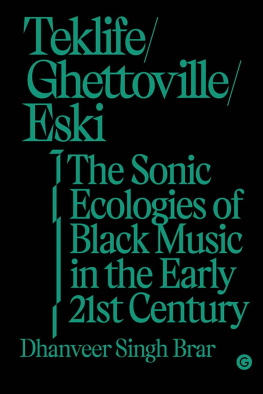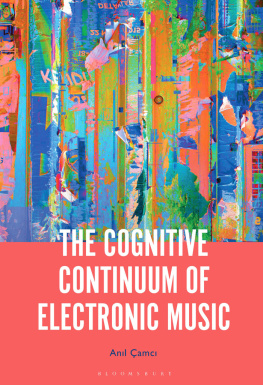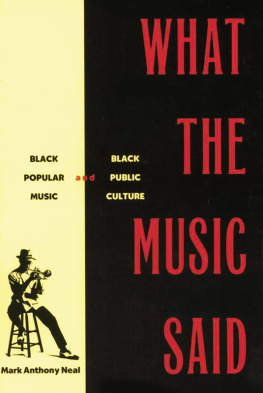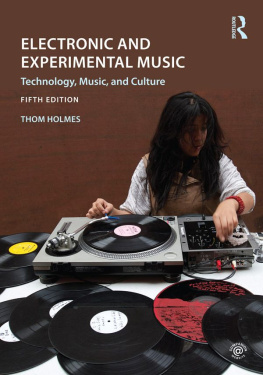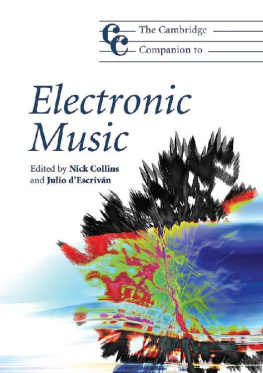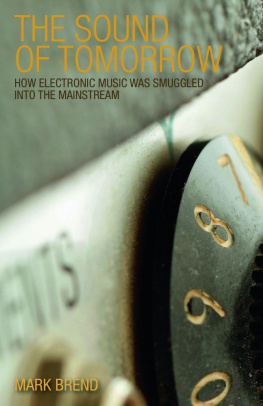Guide
Teklife / Ghettoville / Eski
Sonics Series
Atau Tanaka, editor
Sonic Agency: Sound and Emergent Forms of Resistance, Brandon LaBelle
Meta Gesture Music: Embodied Interaction, New Instruments and Sonic Experience, Various Artists (CD and online)
Inflamed Invisible: Collected Writings on Art and Sound, 19762018, David Toop
Teklife / Ghettoville / Eski: The Sonic Ecologies of Black Music in the Early 21st Century, Dhanveer Singh Brar
Goldsmiths Presss Sonics series considers sound as media and as material as physical phenomenon, social vector, or source of musical affect. The series maps the diversity of thinking across the sonic landscape, from sound studies to musical performance, from sound art to the sociology of music, from historical soundscapes to digital musicology. Its publications encompass books and extensions to traditional formats that might include audio, digital, online and interactive formats. We seek to publish leading figures as well as emerging voices, by commission or by proposal.
Teklife / Ghettoville / Eski
The Sonic Ecologies of Black Music in the Early Twenty-First Century
Dhanveer Singh Brar

Copyright 2021 Goldsmiths Press
First published in 2021 by Goldsmiths Press
Goldsmiths, University of London, New Cross
London SE14 6NW
Printed and bound by Versa
Distribution by the MIT Press
Cambridge, Massachusetts, and London, England
Copyright 2021 Dhanveer Singh Brar
The right of the individual contributors to be identified as the authors of this work have been asserted by them in accordance with sections 77 and 78 in the Copyright, Designs and Patents Act 1988.
Every effort has been made to trace copyright holders and to obtain their permission for the use of copyright material. The publisher apologizes for any errors or omissions and would be grateful if notified of any corrections that should be incorporated in future reprints or editions of this book.
All Rights Reserved. No part of this publication may be reproduced, distributed or transmitted in any form or by any means whatsoever without prior written permission of the publisher, except in the case of brief quotations in critical articles and review and certain non-commercial uses permitted by copyright law.
A CIP record for this book is available from the British Library
ISBN (hbk) 9781912685790
ISBN (ebk) 9781912685806
www.gold.ac.uk/goldsmiths-press

d_r0
Terry Greening
19392011
Harkamal Singh Hothi
19842016
Contents
There are lots of people to thank, all of whom took part in some way or other in the making of this thing.
The founding members of Black Study Group (London): Simon Barber, Victor Manuel Cruz, Ciaran Finlayson, Sam Fisher, Lucie Kim-Chi Mercier, Ashwani Sharma.
Philadelphians who took me under their musical wing: Rucyl Mills, Marlo Reynolds.
Le Mardi Gras Listening Collective: Stefano Harney, Louis Moreno, Fred Moten, Fumi Okiji, Paul Rekret, Ronald Rose-Antoinette.
Laura Harris for reading early versions of the Teklife chapter.
All sorts of people at the University of Pennsylvania: Kevin Connolly, Jennifer Conway, Hubert Cook, Jim English, Nicholas Gaskill, Clemmie Harris, Grace Sanders Johnson, Amber R. Reed, Gina Rivera, Oliver Rollins, Ruth E. Toulson, Sara Varney, Chi-Ming Yang, Alden Young.
Similarly at University College London: Tamar Garb, David (Jeeva) Jeevendrampillai, Stefanie Rauch, Alicia Spencer-Hall, Catherine Stokes, Andreas Wei.
For seeing a book before it was a book: Shana L. Redmond.
Atau Tanaka and Ellen Parnavelas at Goldsmiths Press.
The clan: Mohinder Kaur Brar, Harpawanjit Singh Brar, Arunveer Singh Brar.
Forever: Kezia Likinde Rolfe.
desiccated rumbling bass line / furious chopped audio sample / vicious snapping drum patterns
fizzing asynchronous pulse / crystal clear tones / degraded mumble / valves releasing snatched clouds of digitized hiss
throbbing treble / staggered, shifting breaks / knife-sharp neon melody / truncated rapid fire vocal
The slices of writing above are annotations stimulated by the following three black electronic dance music records: respectively, DJ Rashads Ghost, Our by Actress, and Wileys Ice Rink. Although they are by no means accurate renditions of the originals, and nor do they represent the precision of notated scores, they do attempt to track the unique sensoria internal to these songs, these sonic objects. Yet, each recording cannot be understood according to its internal dynamics alone. Each operates within a circuit, whether it is one shaped by the producer in question, or one shaped by the communal endeavors required to sustain a musical scene. With DJ Rashads Ghost the circuit in question is the Footwork scene. Based in Chicagos South and West sides, Footwork is a style of sonic production and performative kinesis that mutated out of the local Juke and Booty House scenes during the early 2000s. The defining traits of Footwork as a sound are the synthesis of ferocity and co-ordination which conditions its range of rhythmic elements. To grasp Footwork both objectively and conceptually, one must understand its indivisibility from performance. Despite the primary function of the musics from which it emerged being that of social dancing, Footworks primary purpose was the incitement of dance as competition. Strategically shifting outside the leisure space of the dancefloor, Footwork was engineered through the setting of the dance battle, conducted between teams who required of producers and DJs increasingly complex patterns with which to test, explore, and expand their repertoires. In this respect, Footwork also constituted a roving venue, covering the terrain of the racialized Southern and Western territories of the city.
The relation between Wileys Ice Rink and the circuitry of Grime is so permeable as to make the drawing of a distinction almost pointless. This track was forged in the crucible of East London in approximately 2003. It was here that the sound which eventually came to be known as Grime was cut and spliced into shape, within the context of economic and social isolation from a city experiencing the boom economies of market-driven governance a dynamic doubled down by the intensification of racialized policing. Like Footwork, Grime was both a musical signature and a means of social organization, finding a highly effective technology in pirate radio. What Wiley (self-identified as The Godfather of Grime) and his endless roll call of peers and rivals designed in the boroughs of Tower Hamlets and Newham, on the streets of Bow, Stratford, and Limehouse, was something on the order of sonic weaponry, fueling their desire to dominate the landscape through broadcast.
These three soundscapes the Chicago Footwork of DJ Rashads Ghost, Actress South London engineering of Our, and the East London Grime of Wileys Ice Rink are not only indicative of the cutting edge of contemporary black electronic dance music in the first decade of the current millennium, but they signal the capacities of the music of the black diaspora over the same period. That, at least, is the foundational ethos of Teklife / Ghettoville / Eski: The Sonic Ecologies of Black Music in the Early Twenty-First Century

